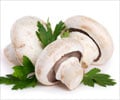A new study hopes to find out how exactly does the psychedelic chemical present magic mushrooms, known as psilocybin, physically affect the brain.

Psychedelic drugs are unique among other psychoactive chemicals in that users often describe ’expanded consciousness,’ including enhanced associations, vivid imagination and dream-like states. To explore the biological basis for this experience, researchers analysed brain imaging data from 15 volunteers who were given psilocybin intravenously while they lay in a functional magnetic resonance imaging (fMRI) scanner. Volunteers were scanned under the influence of psilocybin and when they had been injected with a placebo
"What we have done in this research is begin to identify the biological basis of the reported mind expansion associated with psychedelic drugs," said Dr. Robin Carhart-Harris from the Department of Medicine, Imperial College London. "I was fascinated to see similarities between the pattern of brain activity in a psychedelic state and the pattern of brain activity during dream sleep, especially as both involve the primitive areas of the brain linked to emotions and memory. People often describe taking psilocybin as producing a dreamlike state and our findings have, for the first time, provided a physical representation for the experience in the brain."
The new study examined variation in the amplitude of fluctuations in what is called the blood-oxygen level dependent (BOLD) signal, which tracks activity levels in the brain. This revealed that activity in important brain networks linked to high-level thinking in humans becomes unsynchronised and disorganised under psilocybin. One particular network that was especially affected plays a central role in the brain, essentially ’holding it all together’, and is linked to our sense of self.
In comparison, activity in the different areas of a more primitive brain network became more synchronised under the drug, indicating they were working in a more co-ordinated, ’louder’ fashion. The network involves areas of the hippocampus, associated with memory and emotion, and the anterior cingulate cortex which is related to states of arousal.
Lead author Dr Enzo Tagliazucchi from Goethe University, Germany said: "A good way to understand how the brain works is to perturb the system in a marked and novel way. Psychedelic drugs do precisely this and so are powerful tools for exploring what happens in the brain when consciousness is profoundly altered. It is the first time we have used these methods to look at brain imaging data and it has given some fascinating insight into how psychedelic drugs expand the mind. It really provides a window through which to study the doors of perception."
Advertisement
The data was originally collected at Imperial College London in 2012 by a research group led by Dr. Carhart-Harris and Professor David Nutt from the Department of Medicine, Imperial College London. Initial results revealed a variety of changes in the brain associated with drug intake. To explore the data further Dr. Carhart-Harris recruited specialists in the mathematical modelling of brain networks, Professor Dante Chialvo and Dr Enzo Tagliazucchi to investigate how psilocybin alters brain activity to produce its unusual psychological effects.
Advertisement
Previous research has suggested that there may be an optimal number of dynamic networks active in the brain, neither too many nor too few. This may provide evolutionary advantages in terms of optimizing the balance between the stability and flexibility of consciousness. The mind works best at a critical point when there is a balance between order and disorder and the brain maintains this optimal number of networks. However, when the number goes above this point, the mind tips into a more chaotic regime where there are more networks available than normal. Collectively, the present results suggest that psilocybin can manipulate this critical operating point.
Source-Eurekalert












